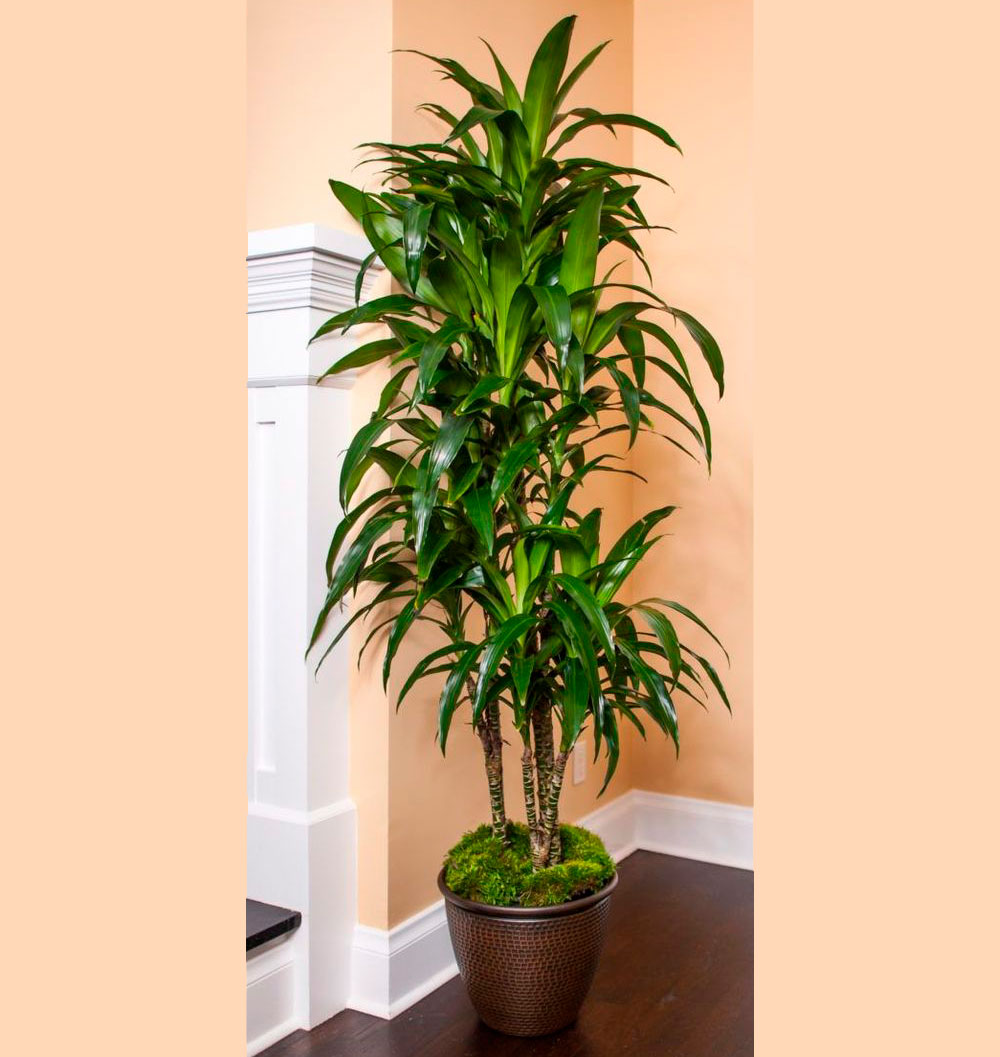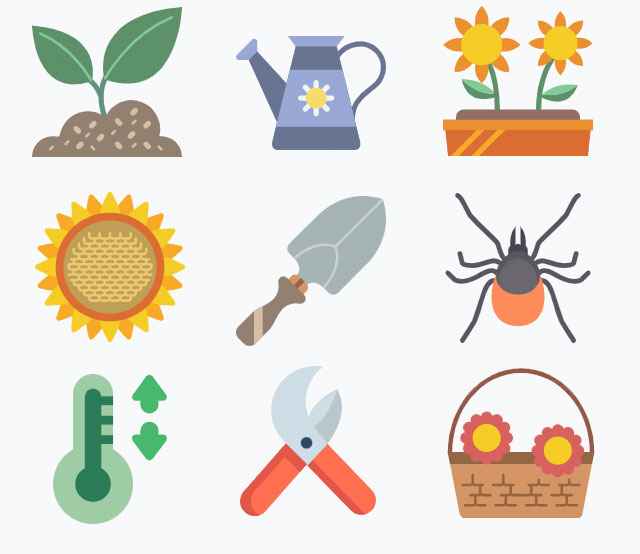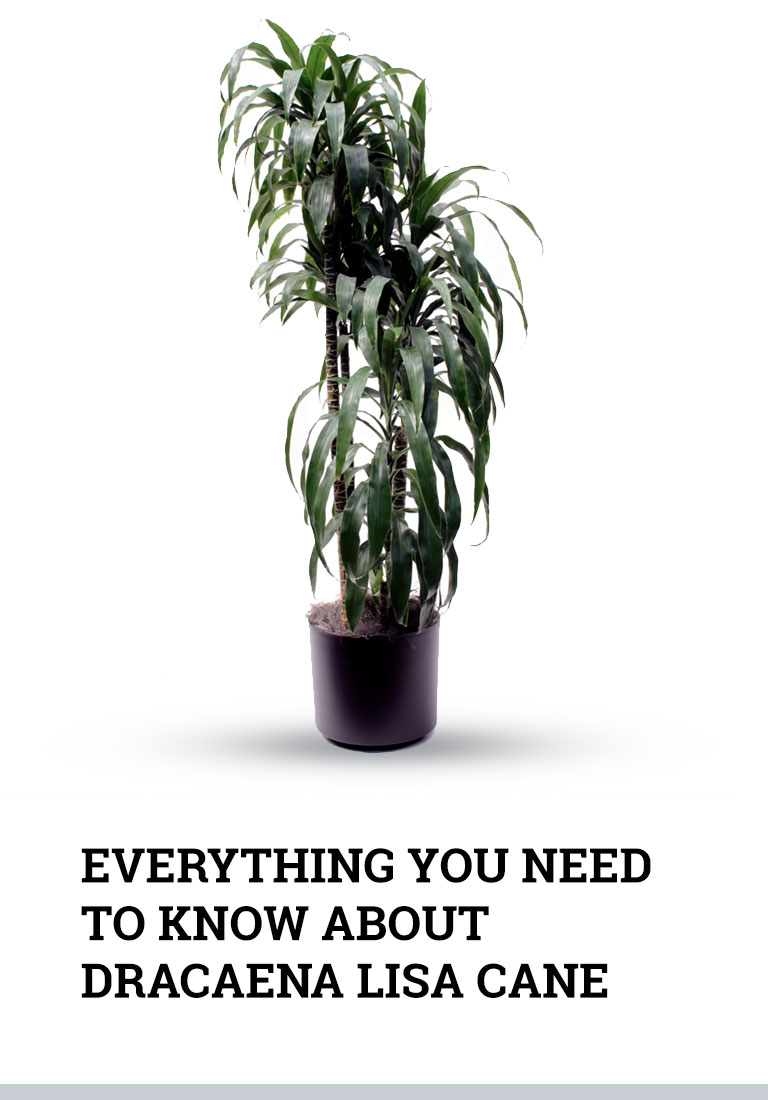When you know what to plant next to this or...
Dracaena Lisa Cane Plant Care Guide
Southeast Africa is considered the birthplace of Dracaena Lisa Cane, and it is one of the most enduring varieties of dracaena. Dracaena Lisa does not require much attention and special care, while it looks spectacular: dark shiny leaves on high narrow trunks, and a fluffy crown of the plant, so this dracaena type is often used for landscaping and decoration of interiors.
✔ We Released The Dracaena HandBook
CLICK HERE TO LEARN MORE >>

Dracaena Lisa Cane: Plant Care Guide

Lighting
Dracaena Lisa tolerates the penumbra and darkened places well, but it is worth considering that the more light the plant receives, the faster it grows. The best place for dracaena will be where it will get enough indirect sunlight. When choosing a place for dracaena, it is important to avoid direct sunlight as it can cause burns on the leaves of the plant. In winter, when the length of the daylight is significantly reduced, it will not be superfluous to illuminate Dracaena Lisa with a special lamp.
Periodically rotate the plant 180 degrees to the light for even growth of your Dracaena Lisa.
Watering
Dracaena Lisa needs moderate watering. Carry out watering only after drying of the top layer of the soil. Excessive watering of Dracaena Lisa threatens by rotting of the root system, and as a result the plant can die. At the same time, do not overdry the soil. The insufficient watering of Dracaena Lisa is indicated by brown leaf tips. On average, Dracena Lisa must be watered once every 10-14 days.
Use only warm, soft and filtered (or well-settled for 24 hours) water.
When caring for Dracaena Lisa it is also useful to wipe the leaves of the plant from dust and dirt with a damp soft cloth, spray the plant for extra humidity, and from time to time in summer make a warm shower for it.
Temperature
Dracaena Lisa grows well at a temperature of +20℃ +25℃, although in summer it can withstand +27℃ +28℃. In winter, place Dracaena Lisa in a cool room, where the temperature does not drop below +12℃ (optimal is +16℃ +18℃).

Air Humidity
Dracaena Lisa is resistant to dry air, but it requires regular spraying of the leaves both when it is kept in winter in the rooms with central heating, and in summer heat. To wash off the dust from long and narrow leaves, make a warm shower for the plant from time to time.
Fertilizer
Fertilize your Dracaena Lisa throughout the year: in summer - once a week with a complex fertilizer for deciduous ornamentals; in winter - once a month. Use fertilizer only after watering the plant, on well-moistened soil.
Poisonous
Remember that Dracaena Lisa Cane is toxic to both cats and dogs. Do not allow your pets chew the leaves of the plant. It can cause weakness, vomiting and indigestion. At the first signs of poisoning, immediately bring your pet to a veterinarian. See more about pets and the effect toxins have here at the ASPCA.
How to propagate Dracaena Lisa Cane

Dracaena Lisa is one of the most beautiful house plants. Almost every dracaena owner dreams of another tree or even a few ones. Dracaena Lisa is perfect for a gift to beloved ones. It is even able to give new life to an aged plant. Thus, among all species of dracaena, it is Dracaena Lisa and Dracaena Marginata that are reproduced best.
It is better to propagate Dracaena Lisa during the period of active growth - in March or April. At the same time, there are several ways of the plant propagation: with apical cuttings, stem cuttings and aerial layers. During each process, you need to place part of the plant in water or in a mixture of sand and peat, and in a few weeks, you will have sprays of a new dracaena.
What harms Dracaena Lisa?
Knowledge about pests and diseases that can hit the plant has an important role in the care for Dracaena Lisa. Failure to comply with how to care for Dracaena Lisa contributes to the development of parasites that can make your plant less attractive, or maybe even destroy it. Here is a list of the most common pests:
Scale insects rapidly affect the plant on both sides, they live on the leaves and stems. After an attack of scale insects, leaves begin to turn yellow, and Dracaena Lisa slows its growth. If you do not take action in time, the plant will soon die. Control measures: if the plant is not badly damaged, you can wash its leaves with a soap solution mixed with alcohol. If Dracaena Lisa is severely damaged, treat its leaves with an insecticide.
Spider mite - affects leaves, after which they acquire a yellowish color, dry, and as a result, Dracaena Lisa faces the fall of leaves. It starts mainly where the air is dry. Measures of struggle - increase in air humidity, spraying the plant, treatment with insecticide.
Thrips is a tiny insect of black color. It settles on the leaves, moving, it leaves behind silvery stains. As a result, the plant slows its growth, the leaves are covered with spots. Measures of struggle - treat Dracaena Lisa with a soap solution, after 24 hours rinse. If it does not help - repeat and set a trap for insects.
- Snake Plant
- Marginata
- Sanderiana
- Reflexa
- Fragrans
- Lemon Lime
- Janet Craig
- Warneckii
- Massangeana
- Compacta
- Deremensis
- Draco (Dragon Tree)
About the Author
My name is Michael Bauer, I have been growing and taking care of plants for 20 years. My dream has become a reality. I've had many difficulties along the way, but my love for our favorite plants has really helped me.So join us!















